Weather and Climate Trends in Limousin
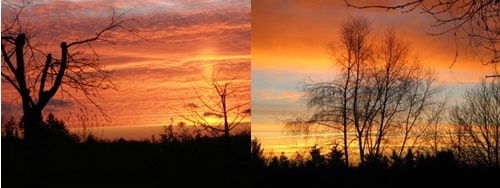

All about the weather and how it may affect your house purchase
It is often said that the weather in Limousin is wet, that it rains constantly and the sun is a rare sight, however, those of us who are lucky enough to live here know that this is definitely not the case. Each department of Limousin experiences different weather and it is possible to bet sat enjoying a glass of wine in the garden and then a phone call comes from a neighbour not too far away who is in the middle of a heavy hail storm.
In summer we can see temperatures of 40 degrees celcius, but in winter it would not be a surprise to see temperatures of -14.
These extremes do make for wonderful seasonal variances in the landscape but also mean many of the plants that grew so happily in your garden in the UK soon disappear in the Limousin garden.
Winds are not a particular feature of the Limousin climate, that is not to stay we do not get some fairly gusty days and the planned sighting of wind powered electricity generators in certain parts of the Limousin are testament to the fact that it can be fairly draughty in the higher areas.
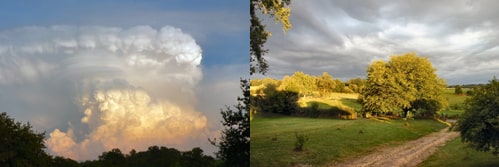
Kathleen Fourches has lived in France for over 50 years spending much of this time in Limousin, so she is well placed to give us the low down on the Limousin climate, here she shares with us some of her experience…
The weather in Limousin is influenced by several things: it is mostly oceanic, with a bit of continental and also mountain effects! In Brive the minimum temperature in January was 1° and the maximum 8° Same in December and in April it goes from 5° to 16°, but that tells you precious little about the rest of the department. Haute Corrèze, being sometimes over 800 m can be much much colder! Brive is the warmest big town in Corrèze. Ussel, for example had temperatures in Jan from -3 to 6. But I have known winters in Corrèze when the thermometer showed 25.° below freezing . . rare, I admit. Climate is more influenced by the altitude than the latitude here. Winters can be thus very cold and sometimes very dry and sunny, but expect quite a lot of snow on the mountains, whether in Corrèze, Creuse or Haute Vienne.
What about the weather?” that is the question I have often been asked – and judging by the forum on this website, it is also still asked by candidate expats. I probably had the same strange lack of knowledge before I settled here, but that is so long ago that I have forgotten, and then I have a husband and a son such “fanatiques de météo” that I have not been allowed to retain my ever-so-English ideas. For in England, as all Britains know, we do not have a climate, just weather.
We British used to look at a map and decide that the further south one goes, the hotter the weather will be. I can recall my year as an assistant of English in a Teachers’ training college in Cahors, south of Limousin, and the remark the middle-aged Philsophy teacher, strangely dressed in jodhpurs ( for cycling), made: “Vous méprisez votre organisme!” ( vaguely “You do not look after your body”) because I was wearing a summer dress and went bare-legged – in October. To me, it was still summer, but to them it was already autumn. Indeed, the central heating was lit on the first of November, whatever the temperature was (or had been before!) and turned off at Easter. I think the French no longer apply those strict rules, but they still do not have the same attitude to climate as we.
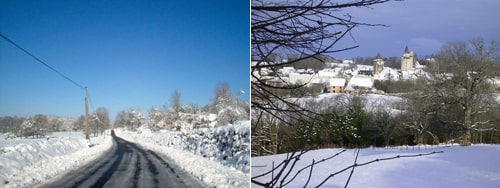
“What is the mildest region in France?” my niece’s husband asked me, planning a summer holiday. I replied that if he wanted mildness, he could do no better than stay in Hampshire! In fact, what my ex-compatriots mean is not really mild weather at all. Mild weather can be accompanied by rain, or at least drizzle – who wants to spend winter in mild Brittany, with little sunshine, when you can go to the mountains and enjoy bright sun and windless days – with temperatures well below freezing, of course, but dry, healthy air? Here in Limousin, we do not have the driest climate, but for me it was a real improvement on my native Lancashire. The winter is harder, but we are often blessed with bright blue skies, little wind, and even at ten degrees centigrade below freezing, my landscapes of high Corrèze under the snow are breathtaking. The same nephew was loading his car outside my front door in his shirt sleeves, when I informed him that the temperature was only 3 degrees. “But it’s sunny! I don’t feel cold” was his answer. Perhaps that is the explanation, and it has nothing to do with mildness at all. The day my sister’s granddaughter, aged five, started running around their Cornish garden stark naked (we had celebrated the birth of her little cousin, and she had drained all the glasses of the champagne I had taken them) it was sunny and thus, she decreed warm. Actually, it was in April and I, like a good French mountain-dweller, was still wearing my thermal underwear.
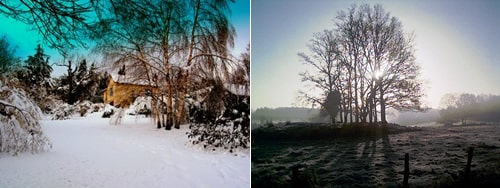
So, before you take the plunge and settle here, find out what the local climate is like and do not surmise that the further south it is, the warmer it will be. The British are still quite surprised when I mention altitude. We have snow here, when Tulle, 400 metres lower down in the valley, is quite clear. When we lived in Auvergne, I had to warn the English assistants appointed in our school to bring their bonnets, fur boots and anoraks, and their skis if they had them, because they apparently all looked at a map, and decided that a town so near the Med as the crow flies must be permanently hot. But we were at 900 metres altitude, and had a mountain climate both Mediterranean and continental. Make no mistake, altitude often counts more than latitude, but if our winters are icy and snowy, autumn can be magnificent and golden, our summers far hotter and sunnier than British ones. Take your choice!
I have recently been reading an old book of ours.’La Météo de la France’, which gives a lot of statistics and is very surprising sometimes.
I recall finding out that it rains as much in Corrèze as in Manchester – but there is really no comparison, as it does not often drizzle, and as my mother always used to say, “when it rains in Tulle – it rains!) I recall walking back up from town to the lycée where we lived, in a storm, and emptying my shoes of water before going indoors ! On the other hand, the only time I have been back to England since I married, was in January when my father died. I have never been so cold – and yet we were on the coast in Wales, Rhos on Sea. And in Tulle, we used to get -15° quite often in January. But there it was wet, and very windy. That makes all the difference!
Here are a few interesting statistics I have taken from the book:
The places with the most rain(or snow)fall :
Vosges : Ballon d’Alsace
In the Massif Central : Mont Aigual (in the department of le Gard, in the Cévennes – at 1567 metres)
Col du Lioran, nearer to us, at 1131 metres
Also Borne in Ardèche (Vivarais) and another place in Aude.
These last places are much further south than Limousin, and yet are wetter – but they are also hotter and sunnier – the rain, when it falls really pours down ! But it usually does not last. What is hard to put up with is drizzle and grey skies.
In these 17 places – not the Limousin! It is not one of the wettest regions.
You would be surprised perhaps to know that Hendaye, on the Basque coast is in that list – I’m not, as I remember a lot of rain when down there on holiday – tents washed out and a flood in the camping site. With the Pyrenees just behind, it catches all the rain clouds coming in from the Atlantic.
Limousin is not one of the dryest places either. One of those is “le Phare de l’Ile Rousse” in Corsica – whereas Vizzavona on the same island is one of the wettest – but that place is in the mountains, at 1000m altitude.
As for wind, which can change one’s feeling about temperature, Toulon in the Med has 37° hours with wind (the Mistral) whereas Limoges only has 10°
I can remember consulting this book and finding that the average January temperature in Cornwall where my sister lives is the average in April in Tulle! But that covers a lot of differences – colder nights and much warmer days in Corrèze.
The book is probably out of print now as we bought it in 1986 !
Information kindly provided by Kathleen Fourches

Rest assured however: Limousin towns and villages offer a lovely place to live with crisp cold winters and day upon day of glorious sunshine in the summer, with the fabulous bright spring days with the heady scent of blossom and the outstanding autumn colours as the temperatures drop towards the winter months.
Follow this link to see the average rainfall for summer 2009
Follow this link for the average winter temperatures 2009/2010
Some useful French phrases that will come in handy when discussing the French weather with your neighbours, also kindly provided by Kathleen Fourches.
It is said that the English are always talking about the weather, but your French neighbours are very likely to do the same.
One thing that amuses me is that is is no word in French to say « It’s fine » – when that just means it isn’t raining ! Here are some of the expressions you may hear :
Il gèle à pierre fendre – literally : It is freezing enough to split stones
Il fait un froid de canard – again, very cold ! Why the duck I don’t know.
Un vent à décorner un boeuf – wind strong enough to blow the horns off an ox.
J’ai l’onglée – my fingers are numb with the cold.
Un temps à ne pas mettre un chien dehors – weather too bad to put a dog outside
Il tombe des hallebardes – literally : halberds are falling ! Don’t say it’s raining cats and dogs – but that is what it means !
For up to date weather reports and forecasts for Creuse Correze and Haute Vienne
Share to: Facebook Twitter LinkedIn Email
More in aude, auvergne, garden, maps, schools, summer, wine
By FrenchEntrée
Leave a reply
Your email address will not be published. Required fields are marked *


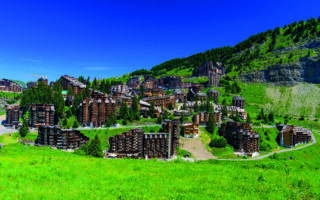

REPLY